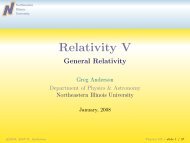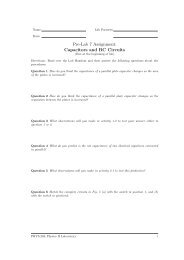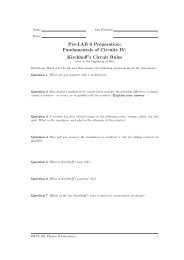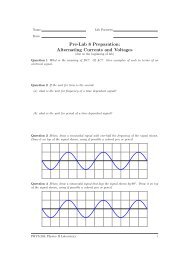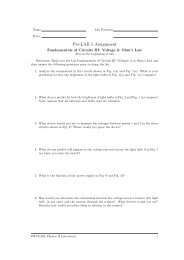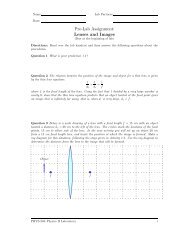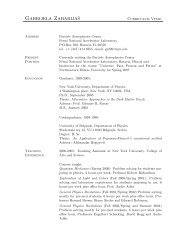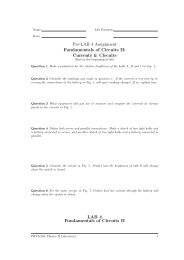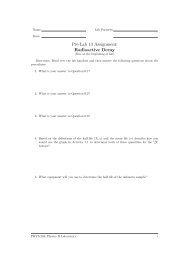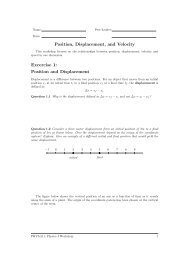Fundamentals of Circuits I: Current Models, Batteries & Bulbs
Fundamentals of Circuits I: Current Models, Batteries & Bulbs
Fundamentals of Circuits I: Current Models, Batteries & Bulbs
You also want an ePaper? Increase the reach of your titles
YUMPU automatically turns print PDFs into web optimized ePapers that Google loves.
<strong>Fundamentals</strong> <strong>of</strong> <strong>Circuits</strong> I: <strong>Current</strong> <strong>Models</strong>, <strong>Batteries</strong> & <strong>Bulbs</strong> v 0.1<br />
Investigation 1:<br />
<strong>Models</strong> describing electric current<br />
What is electric current Today, as you can read in any textbook, we believe that current is<br />
produced by electric charges in motion. The electric current in a copper wire, for example is<br />
produced by the motion <strong>of</strong> electrons through the wire. Do we know this If so, how do we<br />
know How can we experimentally distinguish this model <strong>of</strong> current from other models<br />
These questions were studied and tested by Michael Faraday, a famous early nineteenth<br />
century scientist. Faraday examined the effects <strong>of</strong> electricity from many different sources,<br />
including animals such as electric eels, batteries, and electromagnetic induction in addition to<br />
the electric charge produced by rubbing objects, and concluded that ”electricity, whatever may<br />
be its source, is identical in its nature.”<br />
Let’s put Michael Faraday’s conclusion to a small test. Is the electricity in “static electricity”<br />
identical in nature to the electricity in a battery or power supply Objects which are rubbed in<br />
particular ways are found to attract or repel other objects which have been rubbed in particular<br />
ways. These forces between objects are attributed to a property <strong>of</strong> matter known as charge.<br />
Rubbing the objects produces and induced charge on the objects. This induced charge is an<br />
example <strong>of</strong> static electricity.<br />
The purpose <strong>of</strong> the first activity is to compare the current produced the static charges<br />
deposited by rubbing materials together. to the current produced by a battery or power supply.<br />
You will observe a demonstration using the following materials:<br />
• Large variable capacitor with two metal plates<br />
• Electroscope<br />
• foil covered Styr<strong>of</strong>oam ball on a string<br />
• 300 V battery pack or power supply<br />
• PVC rod and wool cloth<br />
• acrylic rod and polyester or silk cloth<br />
• alligator clip leads<br />
Activity 1.1: Comparing charge from a power supply and charge produced<br />
by rubbing<br />
Step 1: The metal plates <strong>of</strong> a variable capacitor and the conducting ball will be set up as<br />
shown in Fig. 1.<br />
By charging the metal plates in two ways, we can test whether or not the different charging<br />
methods have different effects on the ball dangling between the plates. The two methods<br />
we will test are:<br />
a. Electrostatic Charging by Rubbing. Stroke one plate with a PVC (gray) rod that has<br />
been rubbed with the cat fur or wool. Repeat this several times. Stroke the other<br />
plate with the acrylic (clear) rod that has been rubbed with the silk or polyester<br />
cloth.<br />
PHYS-204: Physics II Laboratory 2




